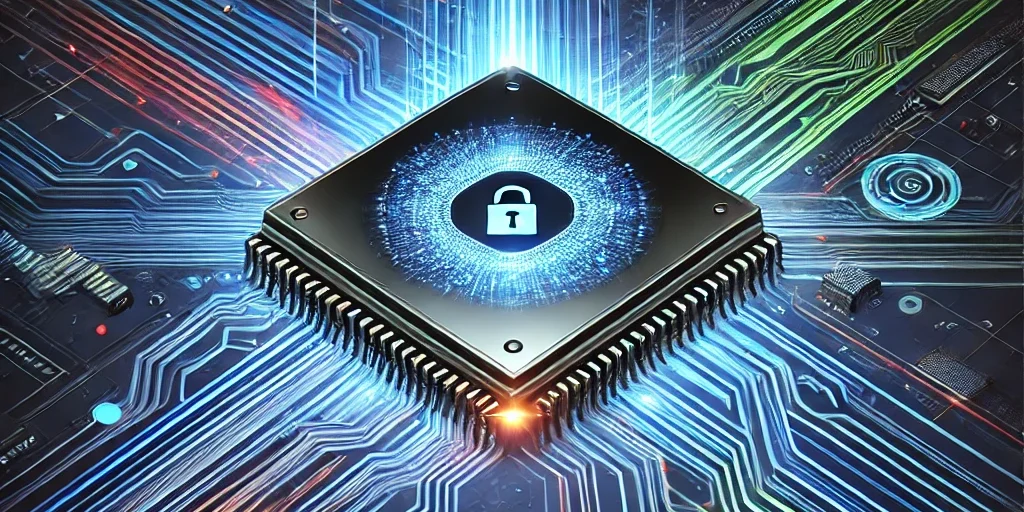Hardware security is becoming increasingly relevant in today’s technological landscape. With the growing complexity of systems and the integration of circuits into critical devices, understanding and mitigating threats like hardware Trojans is essential to ensure the integrity and reliability of our equipment. In this article, we explore two key concepts: hardware Trojans and trusted integrated circuits. We will dive into the fundamentals, identify the risks, and discuss strategies to prevent and detect these threats.
What Are Hardware Trojans?
Hardware Trojans are malicious modifications or additions intentionally introduced into a system or circuit. This practice aims to alter the original functionality, gain unauthorized control of the system, or even steal sensitive information, such as secret keys. The primary objectives of a hardware Trojan include:
- Altering the circuit’s functionality: Changing the expected behavior of the system to perform unauthorized operations.
- System control: Allowing an attacker to take full or partial control of the device.
- Information theft: Capturing sensitive data, thereby compromising the security and privacy of users.
- Reducing reliability: Causing premature failures, which lead the system to malfunction before its intended lifespan.
These characteristics underscore the importance of developing detection and prevention mechanisms, as well as creating benchmarks and tests that help identify patterns and specific features of hardware Trojans.
Trusted Integrated Circuits: Definition and Challenges
A trusted integrated circuit is one that performs exactly as specified—nothing more, nothing less. In other words, it should not execute any additional or malicious operations beyond what was defined in the design. While this concept is straightforward in theory, it presents significant challenges in practice. Key points to consider include:
- Meeting Specifications: The circuit must fulfill all the functional requirements established during the design phase, leaving no room for exploitable “don’t cares.”
- Absence of Unauthorized Functions: Any extra behavior, even if subtle, may represent a vulnerability or indicate the presence of a hardware Trojan.
One of the biggest challenges is that, even with a well-specified design, unforeseen conditions (like unused “don’t care” scenarios) can occur and be exploited by an attacker. Therefore, ensuring the trustworthiness of an integrated circuit requires not only a robust design but also a thorough analysis to verify that no malicious components are present.
A Practical Example: User Authentication
Consider the following scenario:
Alice asks Bob to develop a circuit for user authentication. The circuit is designed to compute a function f(x)f(x), which in this example is the operation of squaring a number. Each user has an ID (from 0 to 9), and the circuit converts the input (represented in 4 bits) into the square of the corresponding number, using a 7-bit output.
In the first design presented, the circuit performs the operation as expected for valid users (0 to 9). However, the behavior for inputs outside this range (for example, 10 or 11) produces incorrect outputs that do not correspond to the actual square of the numbers. While this discrepancy may not compromise the authentication system by itself, Bob introduces a second design with a minor modification in one of the signal connections. This seemingly insignificant change creates a backdoor that adjusts the results for inputs that should originally be invalid, allowing the numbers 10 and 11 to pass authentication. This intentional modification is a classic example of a hardware Trojan, where the circuit begins to perform a malicious function—allowing unauthorized access.
The Importance of Detection and Prevention
Given the risks presented by hardware Trojans, it is crucial to adopt strategies that focus on:
- Detection: Developing techniques and benchmarks that identify patterns and signatures of hardware Trojans. Analyzing signals and verifying the circuit’s behavior are essential steps in confirming system integrity.
- Prevention: Implementing measures during the design process to avoid the intentional insertion of malicious modifications. This includes thorough project reviews and adopting methods that minimize uncertainties, such as eliminating unnecessary “don’t care” conditions.
An integrated approach that combines rigorous hardware analysis with secure design practices is key to building systems that are both reliable and resilient against internal threats.
Conclusion
Ensuring the security of integrated circuits is a challenge that involves both preventing the insertion of hardware Trojans and continuously verifying the trustworthiness of the systems. With a robust design and efficient detection strategies, it is possible to significantly reduce risks and ensure that devices function exactly as planned—without any unwanted surprises.
The evolution of technology and the increasing sophistication of attacks demand that hardware professionals stay updated and adopt increasingly advanced security practices. In a world where system integrity is crucial, investing in hardware security is not just an option—it is a necessity.
Related Articles
To further explore topics related to hardware Trojans and trusted integrated circuits, check out the following articles:
- “Integrated Circuit Metering: Protecting Your Intellectual Property in the World of Chips”: Learn how metering techniques can safeguard chip designs and prevent unauthorized reproduction.
- “Physical Attacks: Unveiling Hardware Security Threats”: Discover the fundamentals of physical attacks and how they relate to hardware security challenges.
- “Physical Attacks on Hardware: Unveiling Threats and Defense Strategies”: Explore practical strategies to defend against physical attacks and ensure hardware reliability.
- “Side-Channel Attacks: Exploring Vulnerabilities in Modern Cryptography”: Understand how side-channel attacks can exploit hardware vulnerabilities and how to mitigate them.
These articles provide a comprehensive view of hardware security, offering insights into protecting integrated circuits and mitigating vulnerabilities.






Pingback: Vulnerabilities in FPGA Systems: Challenges and Countermeasures to Ensure Security - FortShield: Security for Professional Developers